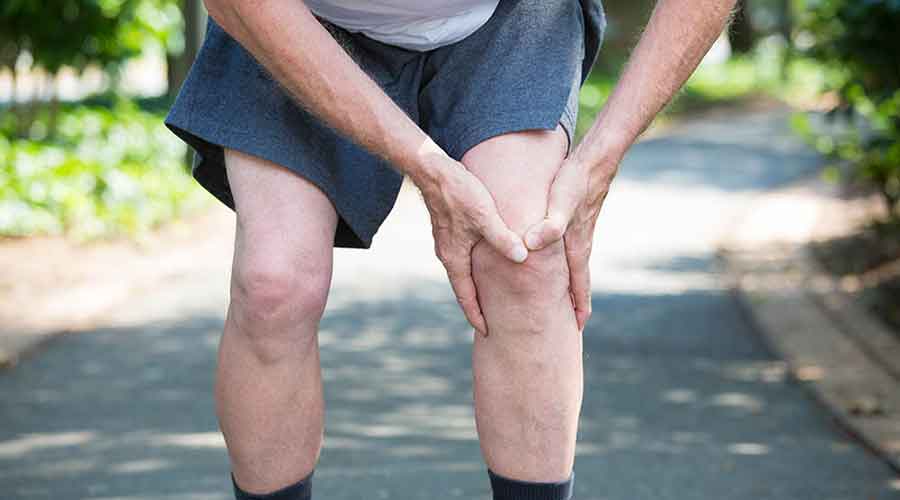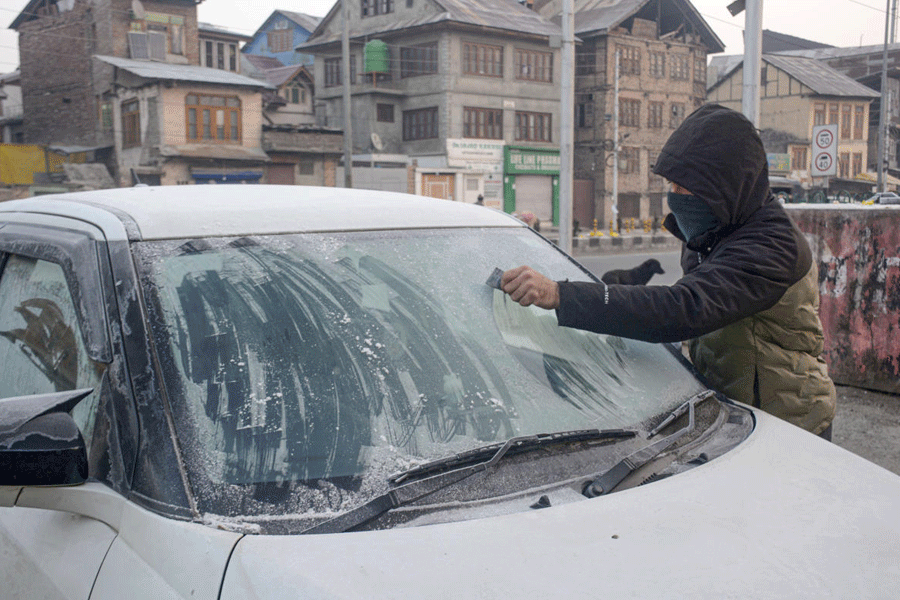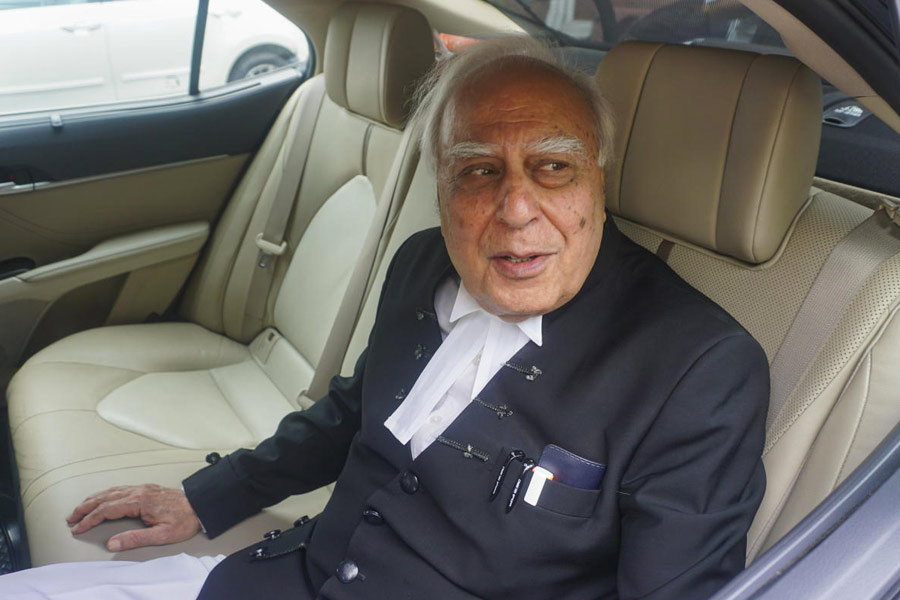An ACL (anterior cruciate ligament) tear is among the most common knee injuries that can occur in people of different ages and activity levels torn and happens most commonly while playing sports. An ACL tear causes leg pain and makes the knee insatiable.
Many individuals who have torn their ACL will know immediately that something “feels irregular” about the knee. Many individuals report hearing or feeling a “pop” at the time of the injury. Most people also experience pain and a feeling of the knee “giving out” even when stressed with simple tasks such as walking. Right after an ACL tear, one can rapidly develop hemarthrosis (bleeding into the joint), which causes swelling, redness, bruising, pain, warmth and a bubbling sensation in the knee joint.
The knee joint will typically swell within a few hours after the injury, which results in restricted mobility and motion of the knee. It may become painful and uncomfortable for the individual to bear weight on the injured leg.
What to do if I think I have a torn ACL?
Immediately after your ACL injury, start first aid. It is important to:
- Stay off the leg and keep it elevated.
- Follow the RICE method to reduce swelling and pain-
- Rest- Take rest and avoid activities that may cause knee pain, including running or walking/ standing for long periods of time.
- Ice- Apply ice packs to the injured knee joint to help reduce pain and swelling. You can use an ice pack several times throughout the day for 10 to 20 minutes at a time.
- Compression- Swelling can be controlled by wearing a tight, elastic compression bandage around the knee.
- Elevation- Keeping your injured knee elevated above the waist to help with swelling.
- Use over-the-counter pain medications for swelling.
- Consult an orthopedist as soon as possible.
- Rest- Take rest and avoid activities that may cause knee pain, including running or walking/ standing for long periods of time.
- Ice- Apply ice packs to the injured knee joint to help reduce pain and swelling. You can use an ice pack several times throughout the day for 10 to 20 minutes at a time.
- Compression- Swelling can be controlled by wearing a tight, elastic compression bandage around the knee.
- Elevation- Keeping your injured knee elevated above the waist to help with swelling.
The orthopedic doctor will determine how severe the ACL injury is and review whether nonsurgical treatments and physiotherapy will be enough or if an ACL tear surgery is necessary. Whether or not surgery is performed, physiotherapy will be critical to strengthen the knee joint and muscles surrounding the knee and to improve mobility and range of motion.
When should you see an orthopedic specialist for a torn ACL ?
If you think you have torn your ACL, it is a good idea to seek immediate medical care. If you do not get the torn ACL fixed, you are likely to experience more knee-related injuries. Remember that the knee joint is quite complex, and all the parts of the joint work together to help you walk and maintain body balance. After an ACL injury, stability and range of motion of the knee is often compromised, which can increase chances of more injuries or accidents.
Typically, you should see an orthopedic doctor if you have-
- Difficulty walking, standing or changing direction
- Severe pain, swelling and bruising that remains for more than 48 hours
- Worsening pain or other symptoms
- Trouble supporting weight on the injured knee
- Strange appearance of the affected knee
How will the doctor check for a torn ACL?
Upon visiting the orthopedic specialist, the doctor may ask you some questions to better understand your state and condition. You will be basically asked questions about your medical history, any previous injuries and lifestyle, like-
- When and how did the injury occur?
- Was the injury accompanied by a tearing sensation or a “popping” sound?
- Has your knee been injured before?
- When did the swelling start?
- Where can you feel the pain?
- Has the pain or swelling gotten worse?
- Can you put weight on your affected leg?
- Does your knee feel unstable?
In addition to these questions, the orthopedic doctor will also perform a physical exam to confirm that you have torn your ACL. Diagnosis of the ACL tear will also include a physical examination of the individual’s knee, to look for any swelling, tenderness, location of pain, and range of motion. The doctor may also move the affected knee or ask the patient to move the affected knee, with or without bearing any weight on it.
Physical diagnosis is specifically designed to test the integrity of the ACL and is especially helpful when the diagnosis is also performed on the other (healthy) knee to compare. The doctor may also perform a Lachman's sign test.
Lachman’s sign test is performed with the individual lying on his or her back and the affected leg kept relaxed.
- The orthopedist will hold the leg with one hand while supporting the lower thigh and the other hand supporting the upper calf.
- The doctor will gently bend the knee to a rough 30 degree angle and then pull the calf forward and upward.
Other diagnostic tests may also be performed to further evaluate the ACL as well as nearby structures, including the meniscus and the MCL (medial collateral ligament). The doctor may perform these diagnostic tests on the unaffected (healthy) knee as well. If the injured knee appears to have an increased range of motion as compared to the healthy knee, the ACL is probably torn or ruptured.
Treatment options for a ruptured or torn ACL
Treatment for ACL tears may range from bracing and physiotherapy to surgery, depending on the grade of the ACL tear, severity of the injury, stability of the knee and the individual’s desired activity level.
Nonsurgical treatment options
For low grade ACL injuries, nonsurgical treatments and rest can help heal the ruptured ACL. If you and your doctor decide to go for nonsurgical treatments to fix your torn ACL, treatment options will mainly include-
- Bracing- You will be asked to wear a knee brace that will protect your knee from instability.
- Physiotherapy- Physiotherapy and exercises will help you regain maximum range of motion of the knee and strengthen the muscles that support the knee joint.
ACL reconstruction surgery
If you have a severe or completely torn ACL, nonsurgical treatments will not be successful for healing the ACL. Once completely torn, the ACL can only be fixed with a surgery. If you choose to have an ACL repair surgery, the orthopedic surgeon will replace the damaged ligament with a tendon or a graft, which may be an autograft (using a tendon from the individual's own knee) or an allograft (operating with a donor tendon).
Orthopedic specialists now prefer to perform the ACL surgery arthroscopically, which allows them to perform the surgery through a small hole in the knee. After arthroscopic ACL reconstruction, Physiotherapy and exercises are important to regain maximum range of motion and strengthen the leg muscles that support the knee joint.
Most people who undergo ACL reconstruction surgery to fix their torn ACL have a good outcome and return to normal function and an active lifestyle. Long-term success rates of ACL reconstruction are reported between 82% to 95%. For patients who do not undergo surgery to repair a ruptured ACL, only half are likely to have a fair outcome with no instability of the knee joint. This option is only practical for sedentary people or for those who have a very less physically active lifestyle requiring no pivoting or cutting.
Who should consider ACL reconstruction surgery?
Some people recover from ACL tears without the need for an ACL surgery. But most people with a high grade or severe ACL tear require surgery. If your doctor recommends surgery, you consider it, weighing all benefits, possible risks and long term outcomes.
Deciding on whether to undergo surgery for an ACL tear or not basically comes down to two things, how severely the stability of your knee has been affected after the injury and if the lifestyle preferences of the individual. The ultimate decision to surgically fix the torn ACL depends greatly on the individual's ability to carry out basic activities of daily living, activities and expectations to return to a physically activity lifestyle and sports.
An ACL reconstruction surgery should be considered when-
- The patient is young or an athlete.
- There is a significant risk of further knee injury if normal mechanics of the knee joint are not restored.
- The occurrence of knee instability is a significant problem for the individual, and inhibits his or her ability to perform regular activities of daily living, play sports, or perform some job-specific requirements.
- The patient has exhausted all non-operative treatments, like physiotherapy, and is still having frequent episodes of the knee giving-way and instability.
- Inability to perform the regular activities or walk without assistive devices like crutches or a brace.
- There is an associated injury to other structures in the knee such as a PCL injury or meniscus injury.
- The patient is fit and healthy to undergo the surgery
- The patient acknowledges and accepts the possible risks and alternatives to the surgery.
- An appropriate and detailed diagnostic evaluation has been performed and it suggests a surgery.
Even if an individual believes that their knee instability is minimal (and they are not having frequent episodes of knee buckling), the knee will still suffer “wear and tear”. This will naturally lead to osteoarthritis by roughening of the joint surfaces, adding additional forces to the meniscus and thereby damaging the tissue. Other ligaments of the knee joint may be stressed as they cope up for the additional forces that the intact ACL would act against.
Delaying or avoiding the ACL repair surgery can lead to long term damage to the knee and can also cause another injury. So, the best advice is to undergo surgery if the condition does not get better with rehabilitation and physiotherapy or if you have a fully torn ACL.











